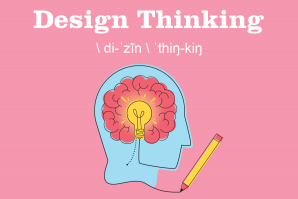\ ˈta-lənt ˈbrand \
Not unlike online daters, it’s common for job seekers to check out a potential employer’s Instagram page to suss out a company’s culture. Although companies may try to appear glossy and appealing on that platform, it can still be informative to gauge the company’s values, perks and just how genuine the smiles on employees’ faces may be.
Beyond the social media facade, companies know that to attract top talent, they better provide benefits that go beyond the basics. That’s because their talent brand — an employer’s public-facing identity that reflects what it’s like to work at the company — can work to attract strong candidates and, just as important, keep them.
The Buzz
Digital Deployment’s CEO Mac Clemmens (Clemmens also is on the Comstock’s editorial advisory board) considers a company’s talent brand “culture as a competitive advantage.”
His Sacramento-based web-design firm has recruited top talent from the Bay Area (Google, AncestryDNA) who wanted to relocate to Sacramento to “do their family thing” but still work for compelling companies.
Clemmens advises against misinterpreting “talent brand” to be an easy fix, like hiring a “head of engagement to keep everyone from being pissed off.” Warning against a well-intentioned but ultimately shallow approach, he says, “It takes more than an affinity group to save it. It can be a Band-Aid if the company doesn’t care and there’s not a fundamental commitment to the human capital.”
The Word
So what are best practices for a company who just wants to appear cool, noble and supportive, and wants to go steady for a long time? Well, be cool, noble and supportive, ideally. But even more, establish a company ethos by focusing on a centralized leadership from the top down. Clemmens advocates for integrating solid principles into the culture, like trust and transparency, and considering what truly motivates people.
For example, health-centric values can go beyond lifestyle offerings (fancy gym programs, healthy snacks) by establishing a mentally healthy work environment via boundary setting. Clemmens says he protects employees by having “no tolerance for abuse (from the customer) or other things that make the work environment toxic.”
That type of culture reflects a deeper value of the team members as opposed to being narrowly focused on the customer the company serves. Supporting employees’ happiness and mental health (unlimited vacation, for example) and encouraging employee growth (education) are forward-thinking ways to invest in people and can breed trust, loyalty and genuine enthusiasm for the workplace.
Clemmens credits focusing on people’s autonomy and well-being as paramount to sustainable success for the company and the people who work there. “The usage of the term ‘talent brand’ accepts the strategy of putting people first as a means to sustainable long-term value, as opposed to quarter to quarter.”
Recommended For You

Buzzwords: Hyperlocal
Relating to or focusing on matters concerning a small community or geographical area.
Eating local, shopping local and advertising local are all trending for a reason — being “hyperlocal” is all about connecting with one’s community.

Buzzwords: Activation
The art of driving consumer action through brand interaction and experiences
For advertising to be effective and resonate with its intended audience, it must strike an emotional chord. Activations take this one step further by immersing the consumer in an experience that’s often sensorial or physical.

Buzzwords: Design Thinking
A methodology that provides a solution-based approach to solving problems.
Various iterations of “design thinking” have come into play over the years, but the process as we currently know it consists of five steps: empathize, define, ideate, prototype and test.

Buzzwords: Fake News
Although “fake news” seems to have emerged from today’s political climate, it’s hardly a new concept. Some American newspapers were printing fabricated information back in the 17th century. What’s new is how “fake news” is now used as a weapon to discredit real news with an intent to deceive. It also now has the power to gain traction via social media.



